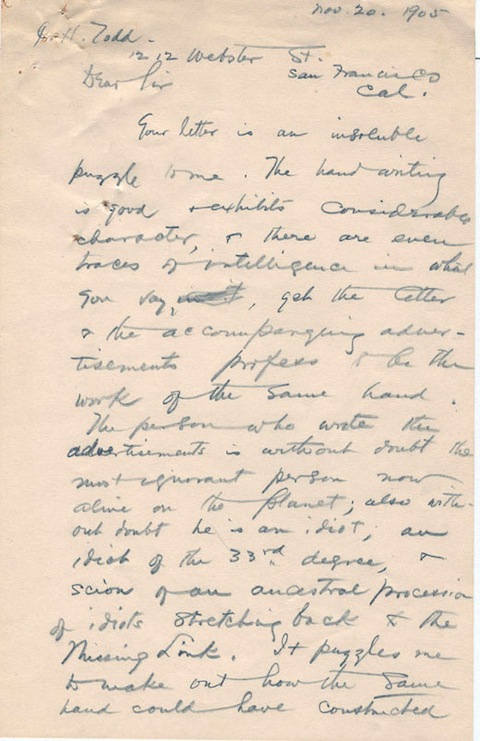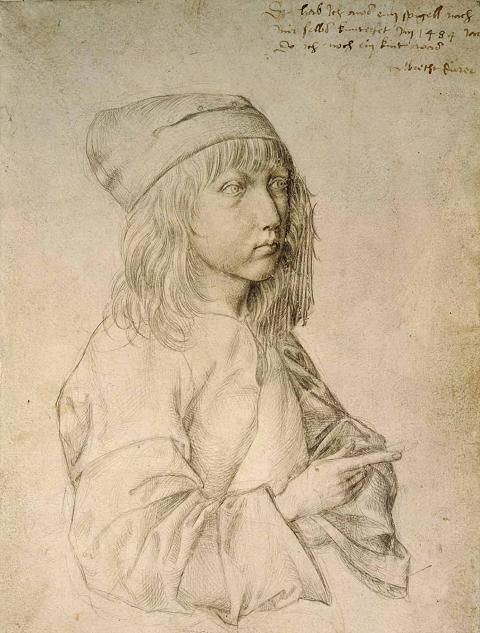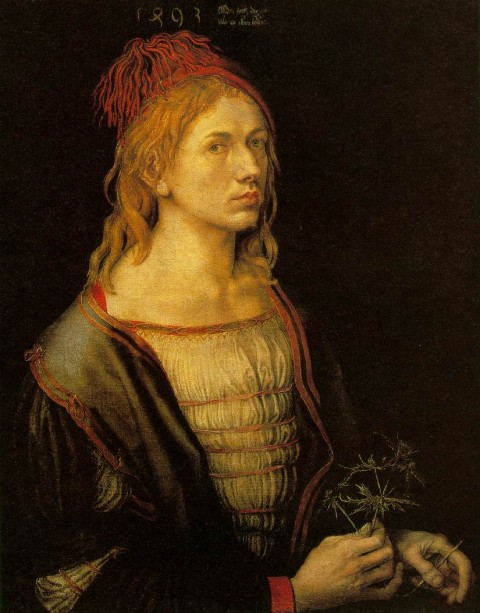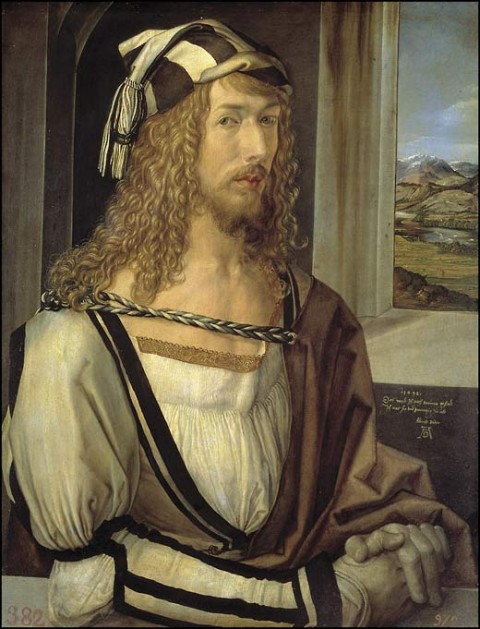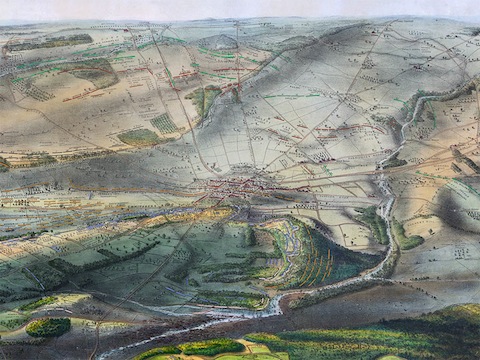Click above for a larger version of page one and click here to see page two.
I recently made the mistake of crafting a letter of complaint that sounded much more temperate than I felt. On the advice of my husband, I deleted anything smacking of emotion, limiting my grievances to incontrovertible fact. A month later and I am still waiting for a reply.
Wish that I had let it all hang out, as Mark Twain did in the above 1905 letter to J. H. Todd, a snake oil salesman whose “Elixir of Life” was alleged to cure even the most terminal of medical conditions. How satisfying it would have been to indulge in phrases like “idiot of the 33rd degree” and “scion of an ancestral procession of idiots stretching back to the Missing Link”!
Having answered phones in customer service, I can attest that there are times when such phrases are misdirected. This was not one of them. Subject yourself to a thorough reading of the Elixir’s claims (a typography challenge on order of a Dr. Bronner’s label) and you will share the author’s outrage.
Charlatans could be dealt with lightly in literature—witness Huckleberry Finn’s self-proclaimed Duke—but having lost children to two of the diseases Todd’s potion purported to cure, Twain refused to let Todd off the hook in real life. His “unkind state of mind” is as bracing as it is warranted.
Though I doubt he got a reply either.
Transcription:
Nov. 20. 1905
J. H. Todd
1212 Webster St.
San Francisco, Cal.
Dear Sir,
Your letter is an insoluble puzzle to me. The handwriting is good and exhibits considerable character, and there are even traces of intelligence in what you say, yet the letter and the accompanying advertisements profess to be the work of the same hand. The person who wrote the advertisements is without doubt the most ignorant person now alive on the planet; also without doubt he is an idiot, an idiot of the 33rd degree, and scion of an ancestral procession of idiots stretching back to the Missing Link. It puzzles me to make out how the same hand could have constructed your letter and your advertisements. Puzzles fret me, puzzles annoy me, puzzles exasperate me; and always, for a moment, they arouse in me an unkind state of mind toward the person who has puzzled me. A few moments from now my resentment will have faded and passed and I shall probably even be praying for you; but while there is yet time I hasten to wish that you may take a dose of your own poison by mistake, and enter swiftly into the damnation which you and all other patent medicine assassins have so remorselessly earned and do so richly deserve.
Adieu, adieu, adieu!
Mark Twain
via Letters of Note
Related Content:
Mark Twain Wrote the First Book Ever Written With a Typewriter
Mark Twain Shirtless in 1883 Photo
Mark Twain Captured on Film by Thomas Edison in 1909. It’s the Only Known Footage of the Author.
Ayun Halliday suspects Mummy Powder is not an effective treatment for epilepsy. Follow her @AyunHalliday
